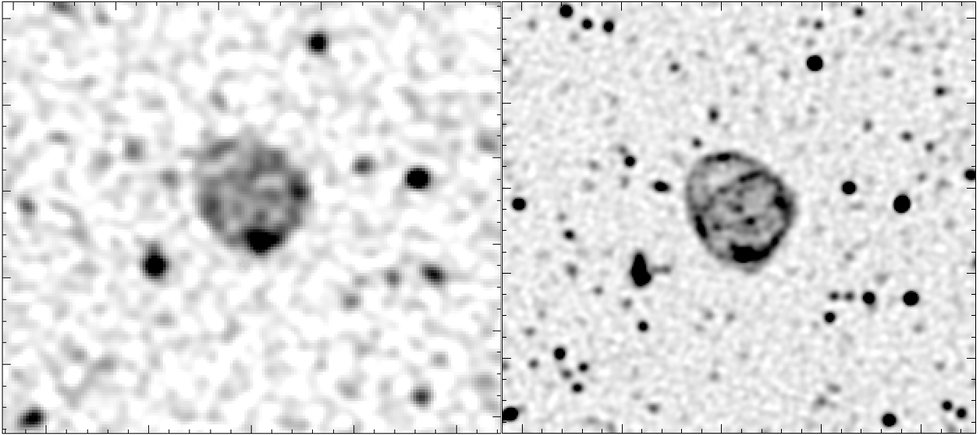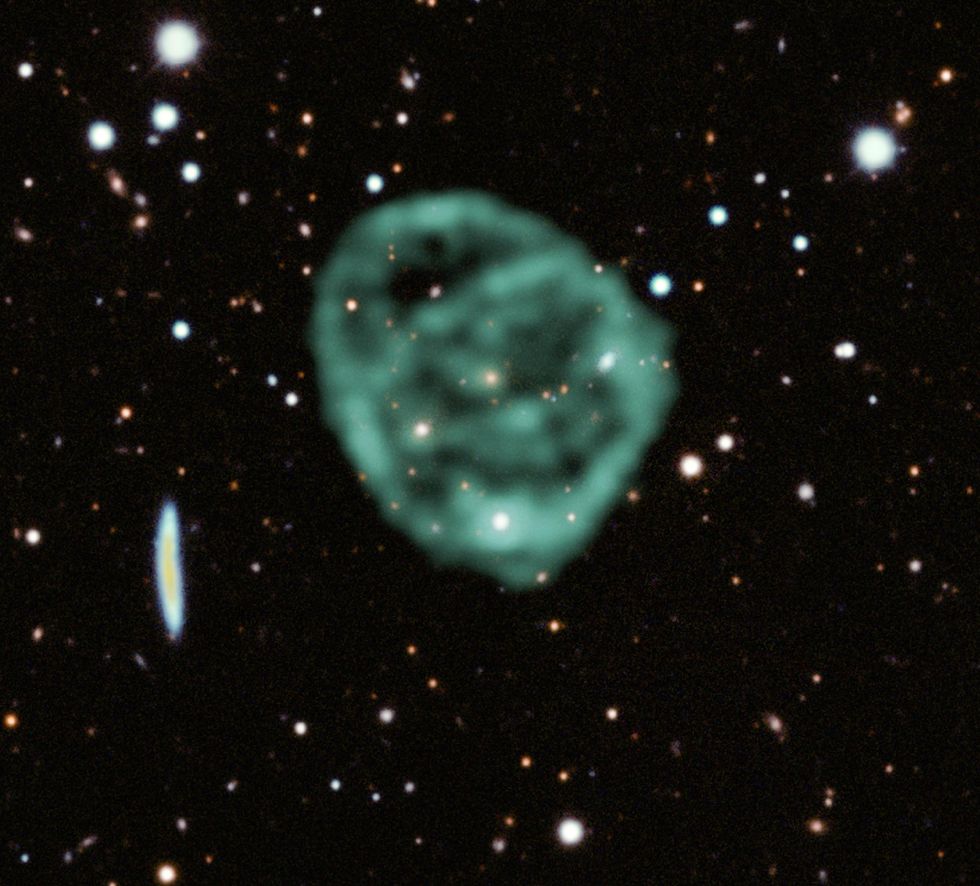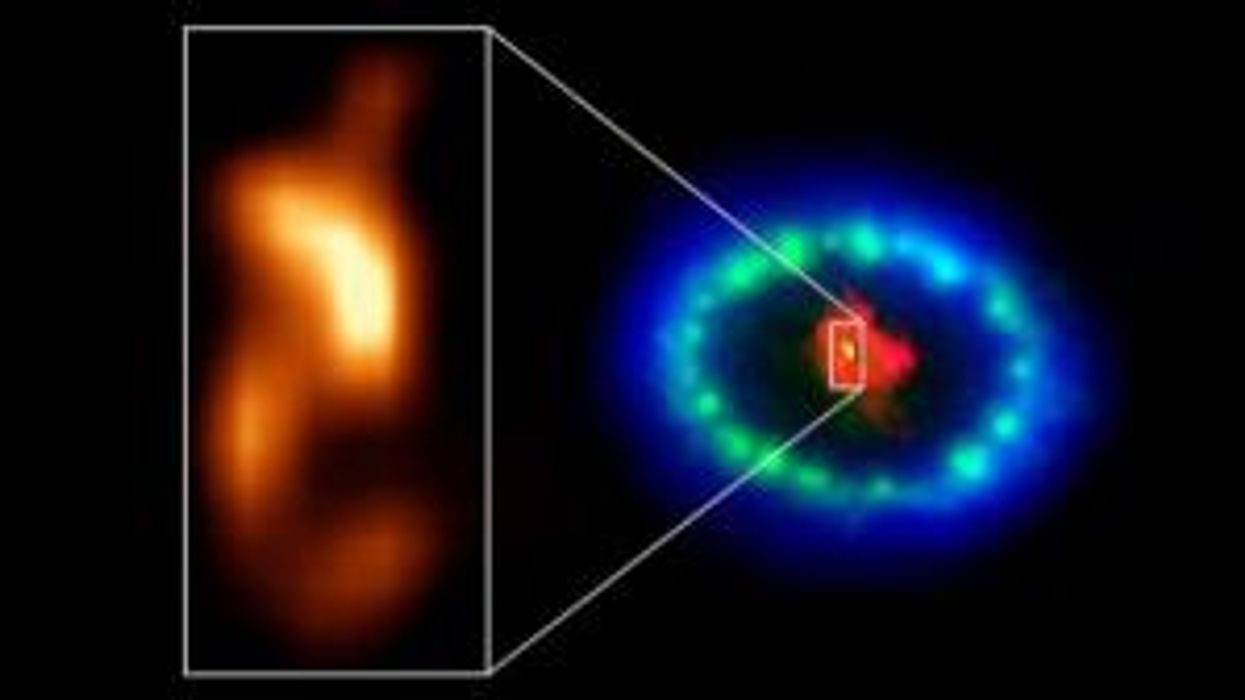Ariana Baio
Mar 24, 2022
This Blob May Help Solve a Decades Old Mystery in Space!
Video
There are always new discoveries to be made when it comes to the final frontier and yet another strange phenomenon has been captured and researched by astronomers.
Detailed images of Odd Radio Circles (ORCs) were captured by the South African Radio Astronomy Observatory’s MeerKAT radio telescope and revealed in a press release on Tuesday, in collaboration with the Australian science agency, CSIRO.
The images are an important step in astronomers' journey to learn more about ORCs, which were only discovered two years ago with the Australian SKA Pathfinder Telescope.
Only about five radio circles have ever been revealed in space, but the images, along with research conducted by astronomers, have led scientists to several theories about the mysterious space orbs.

“We know ORCs are rings of faint radio emissions surrounding a galaxy with a highly active black hole at its centre, but we don’t yet know what causes them, or why they are so rare,” Professor Ray Norris from Western Sydney University and CSIRO said.
So far, ORCs have only been visible through the use of telescopes that use radio wavelengths making it difficult to find and capture them.
Scientists from MeerKAT and CSIRO published a paper outlining three possible theories for ORCs.
- They could be the remnant of a huge explosion at the centre of their host galaxy, like the merger of two supermassive black holes;
- They could be powerful jets of energetic particles spewing out of the galaxy’s centre; or
- They might be the result of a starburst ‘termination shock’ from the production of stars in the galaxy.

The teams hope to collaborate with the help of SKA Observatory to make new discoveries and publish their findings.
“Until the SKA becomes operational, ASKAP and MeerKAT are set to revolutionise our understanding of the Universe faster than ever before," Professor Norris said in the press release.
Have your say in our news democracy. Click the upvote icon at the top of the page to help raise this article through the indy100 rankings.
Top 100
The Conversation (0)














